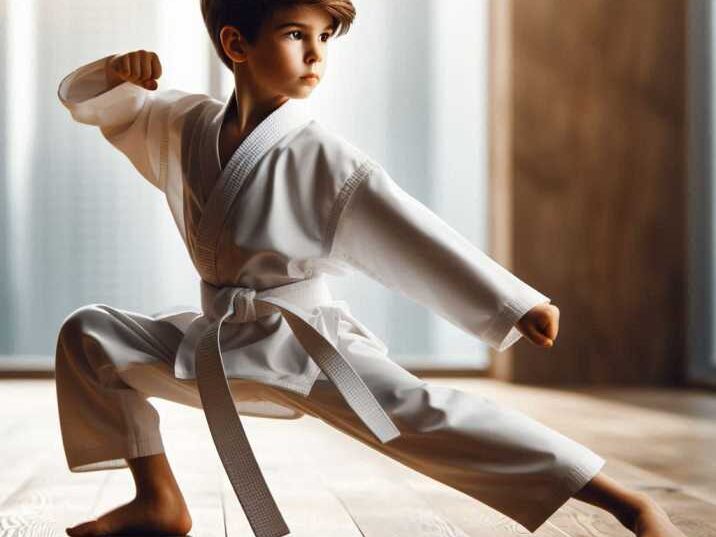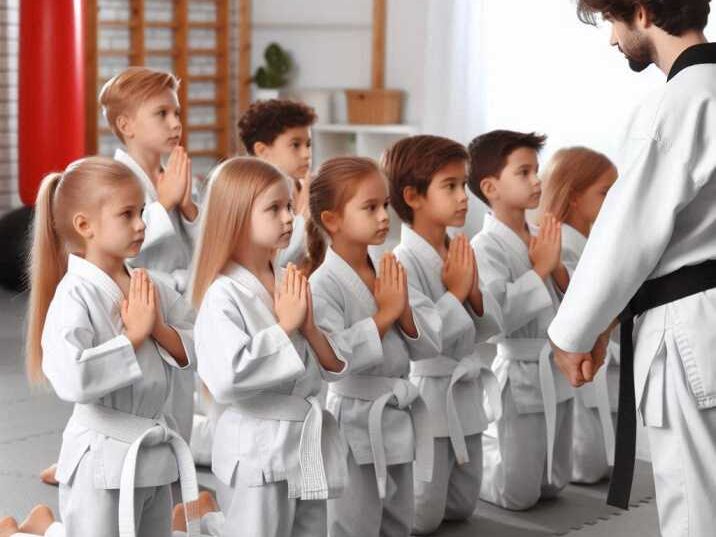Introduction
Table of Contents
Taekwondo is more than just kicking and punching—it’s a way of life that teaches discipline, focus, and respect. Many parents are enrolling their children in taekwondo classes not only to keep them active but also to help them grow into confident and respectful individuals.

This article will explain everything you need to know about taekwondo for kids, from what it teaches to how it can improve school performance, physical health, and even friendship skills. Whether your child is shy, energetic, or somewhere in between, taekwondo may be the perfect martial art for them.
What is Taekwondo?
Taekwondo is a Korean martial art that focuses on high kicks, fast footwork, and strong punches. The word “taekwondo” means:
- Tae = to kick
- Kwon = to punch
- Do = the way
So, taekwondo means “the way of kicking and punching.”
Taekwondo is also an Olympic sport, practiced by millions of children and adults around the world.
Why Taekwondo is Great for Kids
1. Improves Focus and Concentration
In taekwondo, kids must concentrate on their movements, follow their instructor, and listen carefully. This kind of focus can help them do better in school and other activities like music, art, or sports.
2. Builds Discipline and Respect
Kids learn to bow to their instructors and classmates, follow rules, and wait their turn. These behaviors teach self-control and respect for others, which are useful at home and in school.
3. Boosts Confidence and Self-Esteem
When kids earn new belts or learn a new skill, they feel proud. This helps build self-confidence and encourages them to keep trying, even when things get tough.
4. Encourages Physical Fitness
Taekwondo helps kids stay active. It improves:
- Balance
- Flexibility
- Strength
- Cardio health
This means kids become stronger, faster, and healthier.
5. Teaches Self-Defense Skills
While taekwondo is not about fighting, it teaches children how to protect themselves if needed. They also learn when it’s right to use these skills and when it’s better to walk away.

What Happens in a Taekwondo Class?
Class Structure
Most taekwondo classes for kids last 30–60 minutes and include:
- Warm-ups (like jumping jacks or stretches)
- Techniques (like kicks, punches, blocks)
- Forms (Poomsae) – choreographed movements
- Sparring practice (safe and with gear)
- Cool-downs and stretches
- Respect rituals (like bowing or thank-you words)
Belt System
Kids begin with a white belt and move up through colors like yellow, green, blue, red, and black. Each belt represents a new level of skill and responsibility.
Why Do American Parents Love Taekwondo?
In the USA, parents love that taekwondo combines fitness, learning, and character-building. Here are some reasons why:
| Reason | Benefit |
|---|---|
| Teaches manners | Kids learn “yes sir/ma’am,” bowing, and patience |
| Structured routine | Classes follow a predictable, positive structure |
| Encourages effort | Kids are taught to always try their best |
| Promotes mental health | Reduces anxiety, boosts happiness |
| Involves family | Some schools offer family classes or events |
How Taekwondo Helps in School
Many parents say taekwondo helped their child focus better in class, finish homework on time, and treat teachers with respect. This happens because:
- Kids are trained to listen carefully
- They are used to following directions
- They feel more confident to speak up or ask questions
A 2023 study by the American Academy of Pediatrics showed that children in martial arts programs like taekwondo scored 12% higher in attention and classroom behavior tests than those not in such programs.
Is Taekwondo Safe for Children?
Yes! Taekwondo is safe when taught properly. Classes use:
- Padded mats
- Safety gear
- Supervised sparring
- Rules against dangerous moves
Instructors are usually certified by national organizations like the World Taekwondo Federation or USA Taekwondo.
Table of Information: Benefits of Taekwondo for Kids
| Skill | How Taekwondo Helps |
|---|---|
| Focus | Kids must pay close attention during class |
| Discipline | Children follow clear rules and routines |
| Fitness | Builds strength, speed, and stamina |
| Confidence | Earning belts helps kids feel proud |
| Respect | Kids bow to each other and instructors |
What Age is Best to Start?
Most kids can start taekwondo at age 4 or 5. Some schools offer “Little Ninjas” or “Tiny Tigers” classes just for young children. Older kids and even teenagers can start too—it’s never too late to learn!
Can Boys and Girls Both Learn?
Absolutely! Taekwondo is for everyone. Boys and girls train together and compete in matches. Many girls become black belts and even win medals in competitions.
Fun Extras Taekwondo Offers
- Tournaments (kids can earn medals!)
- Belt ceremonies
- Team-building games
- Birthday parties
- Self-defense workshops
These extras make learning taekwondo more exciting and help kids make friends and have fun outside of school.
Conclusion: Taekwondo is a Life-Changing Activity for Kids
Enrolling your child in taekwondo is one of the best decisions you can make for their mental and physical growth. It builds discipline, self-esteem, and respect—qualities that last a lifetime.
Plus, it’s fun, challenging, and gives kids something to be proud of. Whether your child wants to improve in school, stay active, or just try something new, taekwondo for kids is an excellent place to start.
FAQs About Taekwondo for Kids
1. What age can my child start taekwondo?
Most kids can start at age 4 or 5, depending on the school’s program.
2. Is taekwondo safe for children?
Yes, it’s very safe with the proper instruction and gear.
3. Will taekwondo make my child aggressive?
No. Taekwondo actually teaches self-control and how to avoid fights.
4. How often should my child attend classes?
Most kids go 2–3 times per week for the best progress.
5. Can my child earn a black belt?
Yes! With time and dedication, many kids earn their black belts by age 10–13.

